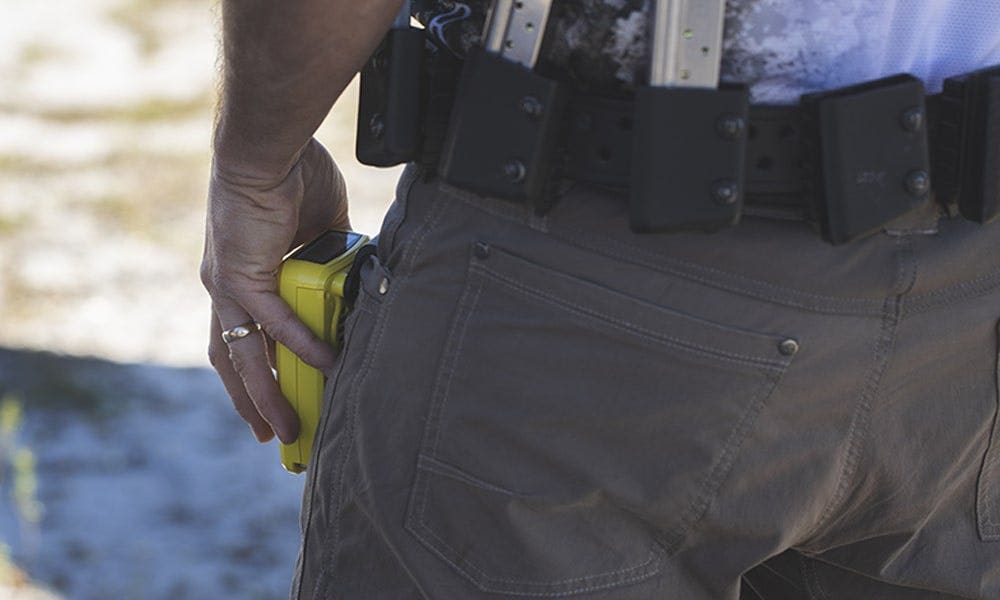Kestrel KST1000 Shot Timer
The KST1000 Shot Timer by Kestrel Ballistics is the most versatile, rugged, and dependable shot timer available. Backed by a 5-year warranty and made in the USA, this timer won't quit.
Kestrel KST1000 Shot Timer Overview
Now Featuring Direct Integration with PractiScore 2!
The Kestrel Ballistics Shot Timer just got even better. With the latest firmware update, the KST1000 now integrates directly with the PractiScore 2 app, eliminating the need for manual time entry. The firmware update is available now and can be easily installed by KST1000 owners through the Kestrel Ballistics LiNK app. Once updated, users simply pair their KST1000 Shot Timer with their device running PractiScore 2 and enjoy integrated time syncing, streamlining match operations and offering competitive shooters, match directors, and range officers a faster, more accurate way to capture and organize shooting data.
The KST1000 Shot Timer by Kestrel Ballistics is the most versatile, rugged, and dependable shot timer available. Backed by a 5-year warranty and made in the USA, this timer won't quit.
- Designed and built in the USA
- 5 Nameable setting presets
- Countdown display for Par Timer
- 2 Easy-to-use screens from your hip or in your hand
- Compatible with dry fire and suppressed shooting
- Extra Loud Buzzer
- Waterproof and dust-proof
- Bluetooth Link Enabled
- Durable Drop-tested to MIL-STD-810G standards
KST1000 Shot Timer | Updating Firmware on Your KST1000
Learn how to easily update the firmware on your Kestrel Ballistics KST1000 Shot Timer.
KST1000 Shot Timer | Pairing KST1000 with Practiscore 2
Learn how to pair your Kestrel Ballistics KST1000 Shot Timer with the PractiScore 2 app for seamless match scoring and performance tracking.
KST1000 Shot Timer | Enable Push Mode in Practiscore 2
how to use Push Mode in the PractiScore 2 app while connected to your Kestrel KST1000 Shot Timer.
KST1000 Shot Timer | Use PractiScore with the KST1000
This tutorial walks through using the app, capturing shot data from the KST1000, and ensuring everything runs smoothly on the range.
KST1000 Shot Timer | How to Use Par Times
In this video, Kestrel Ballistics' Robert Vlacich shows you how to set up and use the custom par times feature within the KST1000 Shot Timer.
KST1000 Shot Timer | Start Loop
In this video, Kestrel Ballistics' Robert Vlacich shares the start loop feature and the benefits of using it out on the range.
KST1000 Shot Timer | How to Use Start Delay
In this video, Kestrel Ballistics' Robert Vlacich explains how to set up and use the start delay feature on the KST1000 Shot Timer.
KST1000 Shot Timer | Using Presets for Matches & Drills
In this video, Kestrel Ballistics' Robert Vlacich explains how to use presets for matches and drills.
KST1000 Shot Timer | Why Do We Show Elapsed Time?
In this video, Kestrel Ballistics' Robert Vlacich explains why we show the elapsed time on our device.
KST1000 Shot Timer | How to Adjust Sensitivity & Echo Settings
In this video, Kestrel Ballistics' Robert Vlacich shows you how to adjust your shot timer's microphone sensitivity to allow for all types of range training.
KST1000 Shot Timer | How to Wear/Hold Your KST1000
In this video, Kestrel Ballistics' Robert Vlacich informs KST1000 users on the proper positions and placement of their devices while in use.








